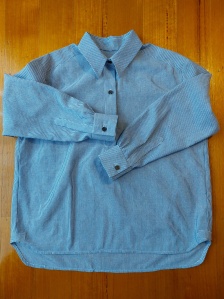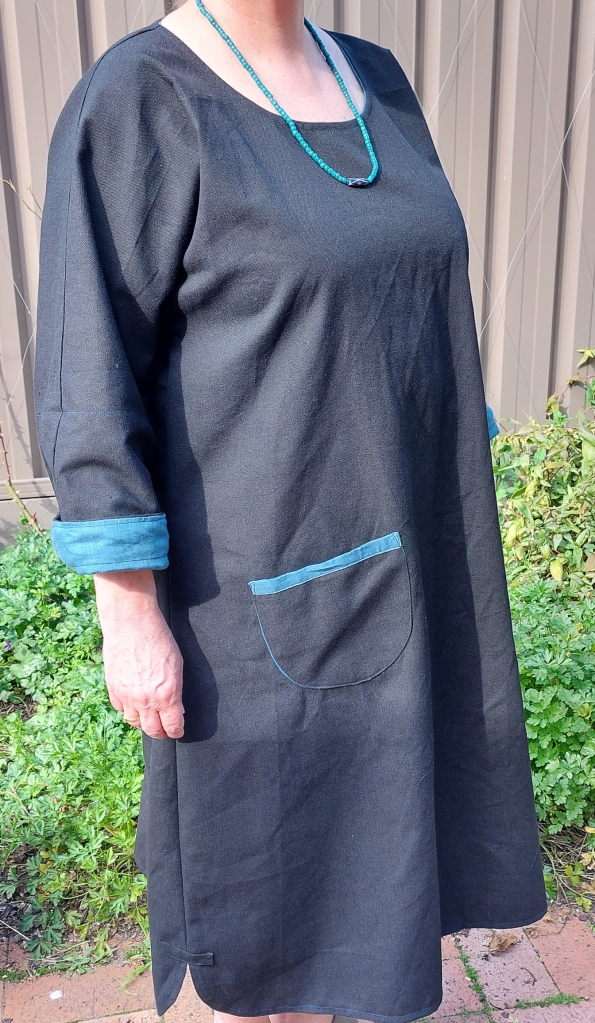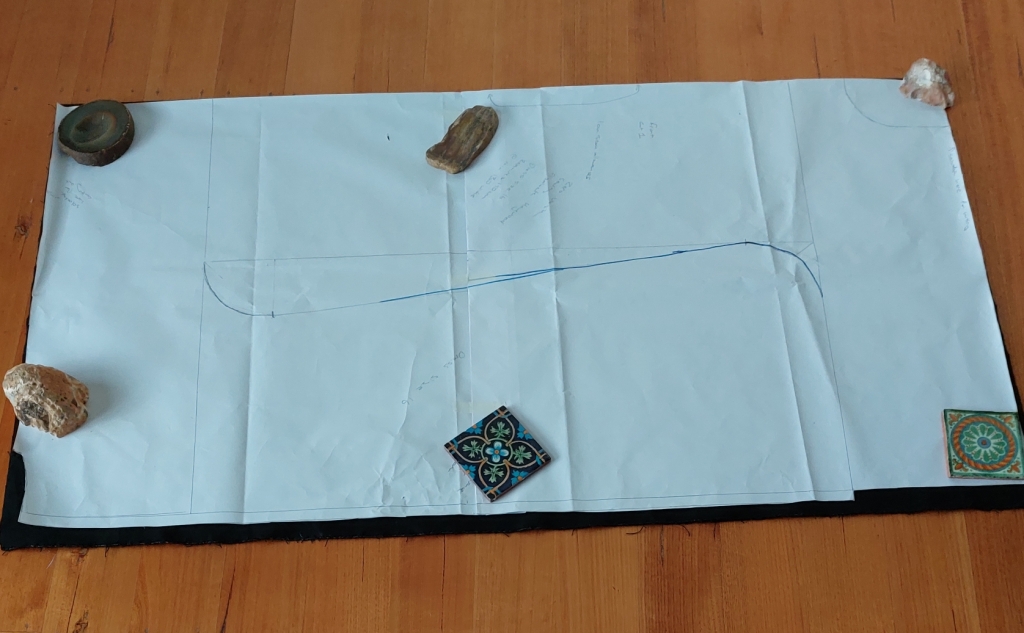I have really enjoyed trying out the patterns in the Zero Waste Sewing book by Elizabeth Haywood. They are interesting from a design and engineering point of view and are fun to make.

A few observations:
- The patterns mostly call for fabric over 130cm or so. Wide dress fabric can be hard to find so it’s worth checking in at the upholstery section of your favourite fabric store. Sometimes they have fun prints.
- Taking of prints, if your fabric is printed, the print may not go all the way to the selvedge. Depending on where the selvedge is used in the pattern, the gap may not be visually appealing to you. Consider trimming to the end of the pattern and overlocking the raw edge. This might make your garment low waste instead. Your project, your call, but worth considering.
- The patterns in the book seem to be generously proportioned based on the two I have made. I suspect the 1 metre top might not have so much ease but I haven’t made it so it’s just that – a suspicion.
- The robe lapel fold back and hood show the wrong side of the cloth. I recommend you consider this when selecting your fabric. Similarly, directional prints could lead to some surprises.



